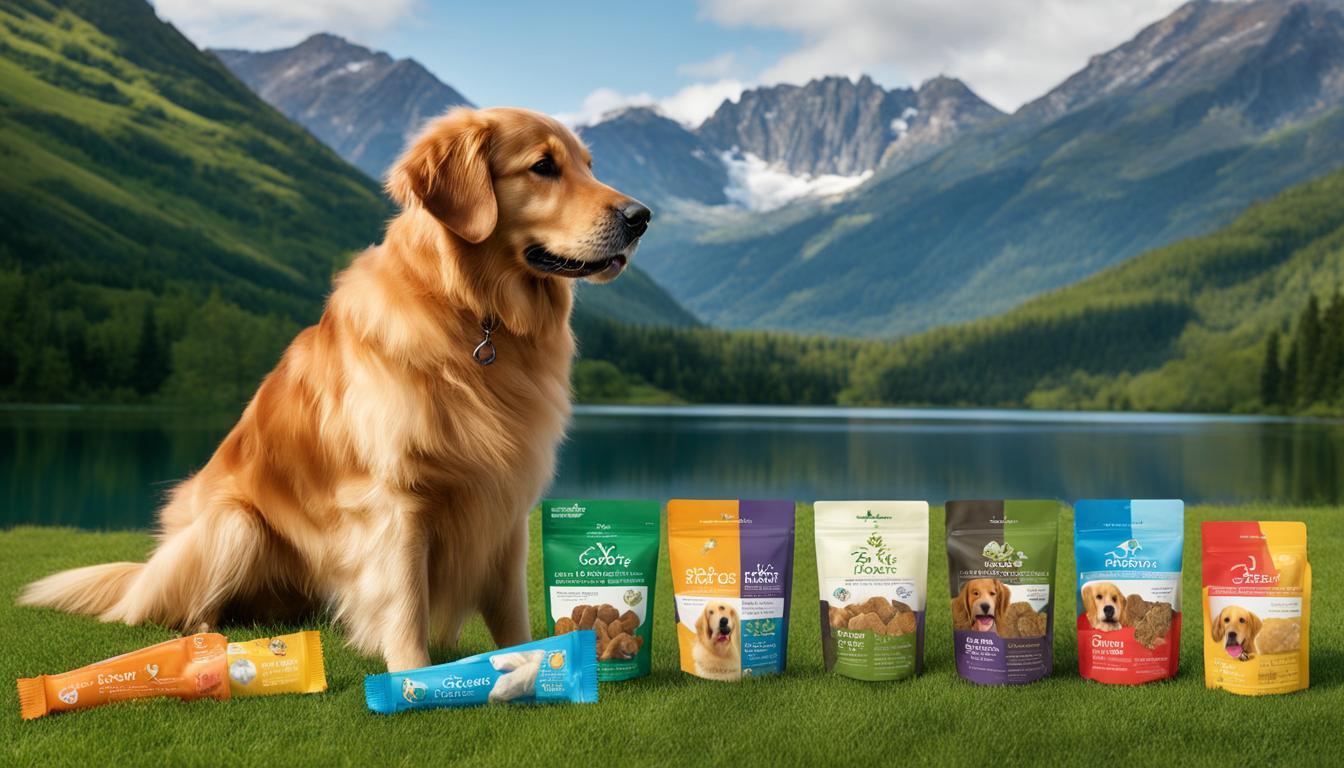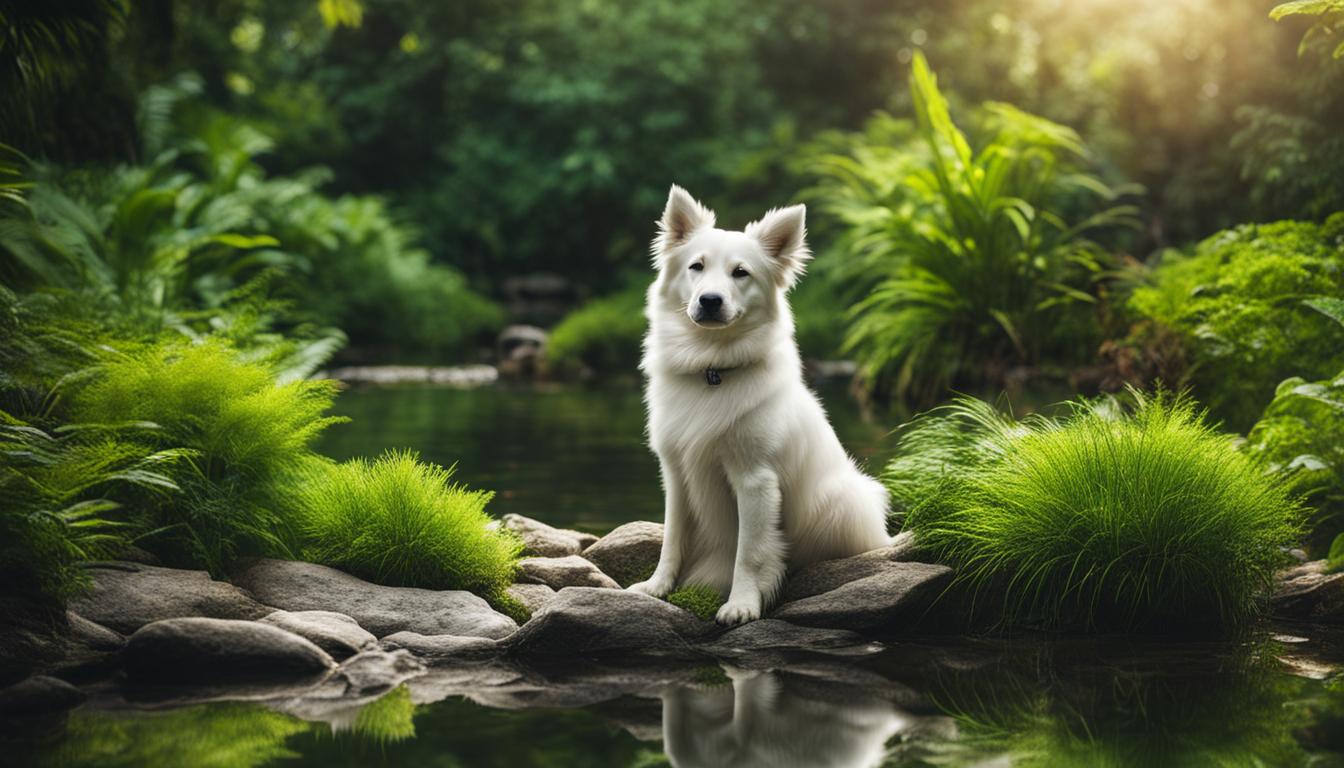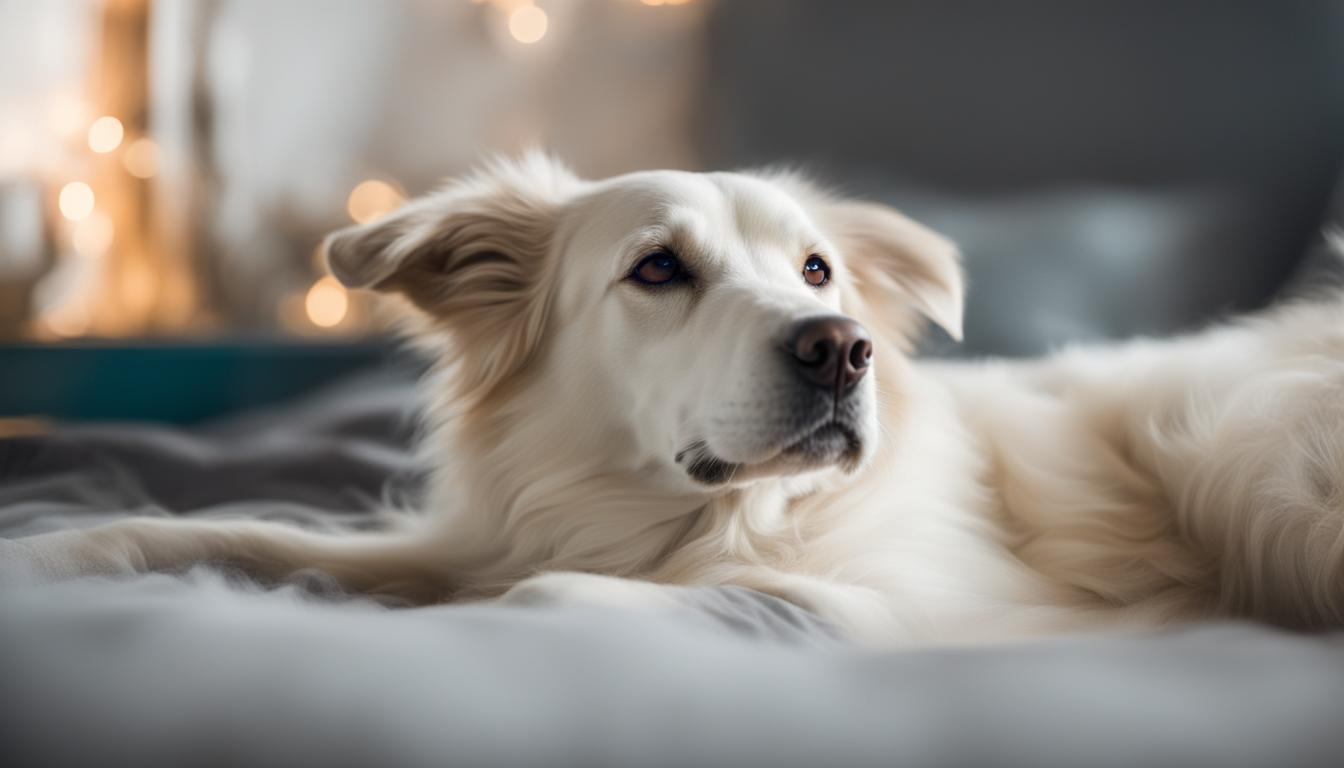Have you ever wondered why some dogs have long, flowing coats while others have short, sleek fur? Understanding the science behind dog coat types is essential for providing the proper grooming and care that your furry friend needs. In this article, we will explore the different coat lengths, the distinction between hair and fur, and the importance of a dog jacket in certain weather conditions. So, let’s dive in and unravel the mysteries of your dog’s fur!
When it comes to grooming your dog, one size does not fit all. Different coat types require different approaches to maintain their health and appearance. By understanding your dog’s specific coat type, you can tailor your grooming routine to their unique needs. Whether your dog has a long, flowing coat that needs regular brushing or a short coat that requires minimal maintenance, it’s crucial to know how to keep their fur in top shape.
There is often confusion between dog hair and fur, but they are not the same. Hair refers to longer and thinner strands, while fur is shorter and denser. This distinction is important because it affects how your dog’s coat grows, sheds, and retains heat. Understanding the difference between hair and fur will help you better understand your dog’s grooming needs.
In certain weather conditions, a dog jacket can be a lifesaver. Just like humans, dogs can feel the cold, especially breeds with shorter coats or those that are not suited for colder climates. A dog jacket provides an extra layer of insulation to keep your furry friend warm and comfortable. So, don’t forget to add a stylish jacket to your dog’s wardrobe!
Key Takeaways:
- Understanding your dog’s specific coat type is crucial for proper grooming.
- Dog hair and fur are not the same, and their differences impact grooming needs.
- A dog jacket is essential in certain weather conditions to keep your dog warm.
- Tailoring your grooming routine to your dog’s coat type will ensure their fur stays healthy and beautiful.
- Regular brushing and maintenance are key to maintaining your dog’s coat.
Different Dog Coat Types: Long, Medium, and Short Coats
When it comes to dog coats, there is a wide variety of lengths to consider. Understanding the different coat types is essential for proper grooming and care. Let’s take a closer look at long, medium, and short coats, along with some helpful grooming tips for each.
Long Coated Dogs
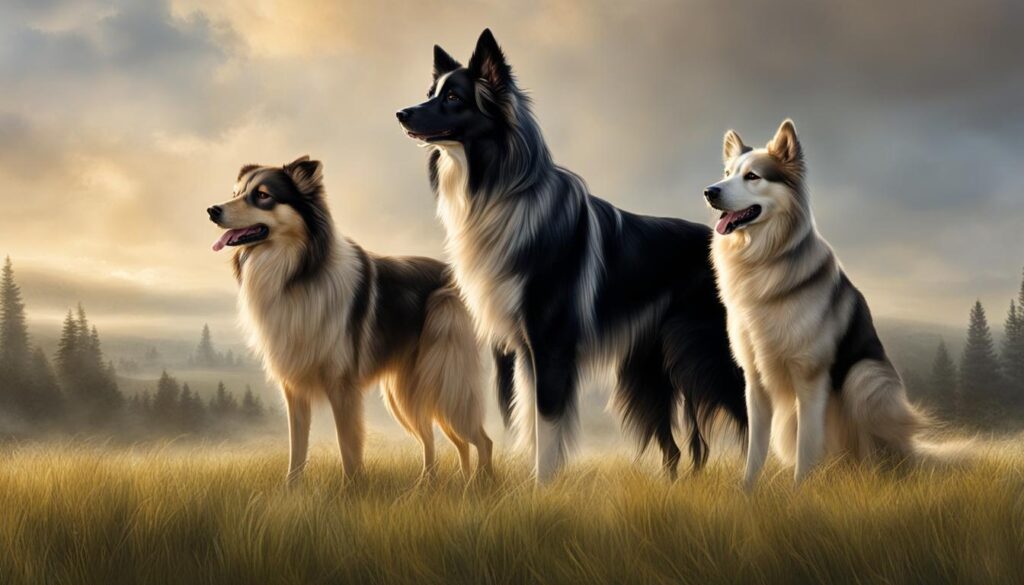
| Breed | Grooming Needs |
|---|---|
| Afghan Hound | Regular brushing, occasional trimming |
| Shih Tzu | Daily brushing, regular professional grooming |
| Maltese | Daily brushing, regular bathing, professional grooming |
Dogs with long coats, such as Afghan Hounds, Shih Tzus, and Maltese, require regular brushing to prevent matting and tangling. In addition to brushing, occasional trimming may be necessary to maintain the coat’s shape and prevent excessive length. Professional grooming is often recommended for long-coated breeds to ensure proper hygiene and coat health.
Medium Coated Dogs
| Breed | Grooming Needs |
|---|---|
| Golden Retriever | Regular brushing, occasional bathing |
| Australian Shepherd | Regular brushing, occasional bathing, shedding management |
| Cocker Spaniel | Regular brushing, professional grooming, ear cleaning |
Medium-coated dogs like Golden Retrievers, Australian Shepherds, and Cocker Spaniels have coats of moderate length and density. Regular brushing helps to remove loose hair, prevent matting, and maintain coat health. Occasional bathing and professional grooming may also be necessary to keep the coat clean and well-maintained.
Short Coated Dogs
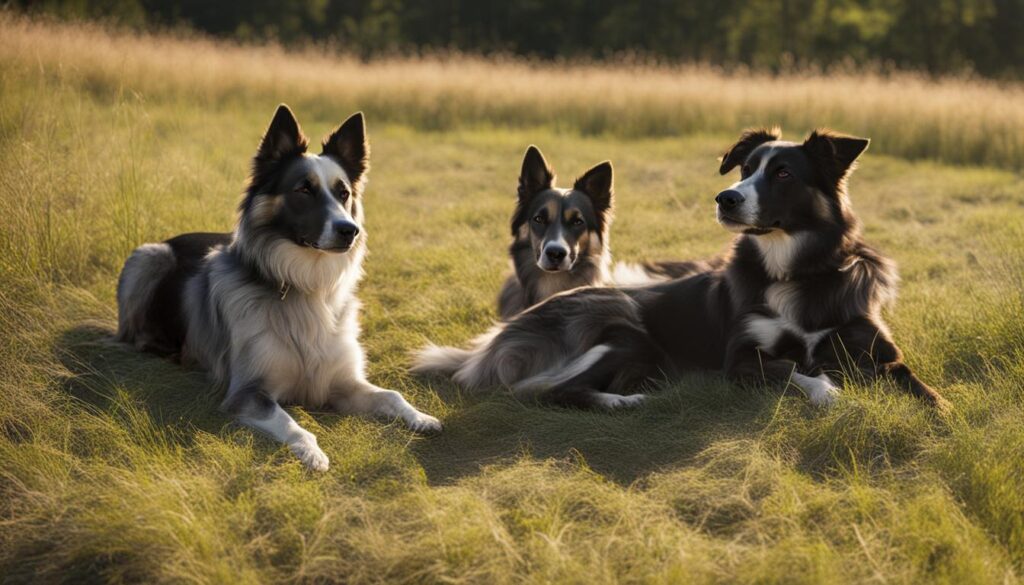
| Breed | Grooming Needs |
|---|---|
| Labrador Retriever | Regular brushing, occasional bathing |
| Boxer | Minimal brushing, occasional bathing |
| Doberman Pinscher | Minimal brushing, occasional bathing |
Short-coated dogs, including Labrador Retrievers, Boxers, and Doberman Pinschers, have coats that are easy to maintain. Regular brushing helps to remove dead hair and distribute natural oils, while occasional bathing keeps the coat clean. These breeds typically require minimal grooming compared to long or medium-coated dogs.
By understanding the specific needs of different dog coat types, you can ensure that your furry friend’s coat stays healthy and well-groomed. Whether your dog has a long, medium, or short coat, proper grooming practices will contribute to a happy and healthy canine companion.
Double and Single Coated Dogs: Understanding the Difference
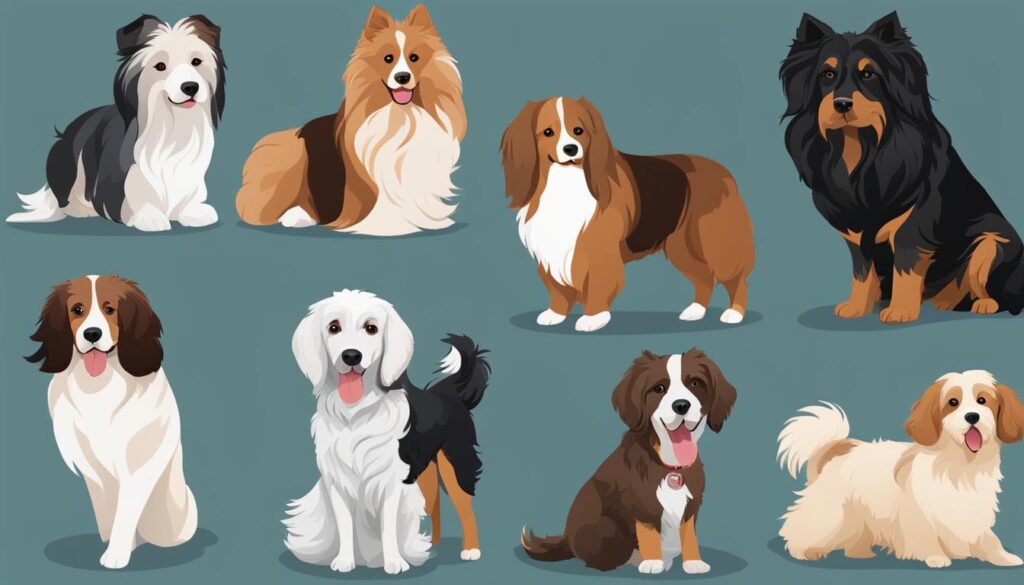
Understanding the unique characteristics of each specialized coat type is essential for providing appropriate grooming and care for your dog. Whether it’s regular brushing to prevent matting or specialized trimming techniques to maintain the coat’s texture, knowing how to care for your dog’s coat will help keep them healthy and looking their best.
Common Coat Troubles: Brittle, Dry, or Greasy Coats
Your dog’s coat plays a crucial role in their overall health and well-being. However, just like humans, dogs can experience coat troubles that may indicate underlying issues. Understanding these common coat problems, such as brittle, dry, or greasy coats, is essential for maintaining your dog’s coat health.
A dry coat can be a sign of inadequate hydration or a lack of essential nutrients in your dog’s diet. To address this issue, ensure that your furry friend has access to clean water at all times and provide a balanced diet that includes healthy fats, like omega-3 fatty acids. These healthy fats help to nourish the skin and promote a shiny, moisturized coat.
On the other hand, a greasy or oily coat may indicate an overproduction of sebum, which is the natural oil produced by the skin. This can result from various factors, including skin infections, hormonal imbalances, or poor grooming practices. Regular bathing with a gentle shampoo designed for dogs can help to control excess oil and keep your dog’s coat clean and healthy.
If you notice persistent coat troubles, it is important to consult with your veterinarian. They can help identify any underlying health issues and recommend appropriate treatment or dietary changes. Regular veterinary care, along with a nutritious diet and proper grooming routine, are essential for maintaining your dog’s coat health and overall well-being.
| Coat Trouble | Possible Causes | Treatment |
|---|---|---|
| Dry Coat | Inadequate hydration, lack of essential nutrients | Ensure access to clean water, provide balanced diet with omega-3 fatty acids |
| Greasy Coat | Overproduction of sebum, skin infections, hormonal imbalances, poor grooming practices | Regular bathing with gentle shampoo, consult with veterinarian if necessary |
Understanding a Dog’s Coat in Different Seasons: Keeping Them Warm or Cool
In order to properly care for your dog’s coat, it’s essential to understand how it functions in different seasons. While dogs have a natural ability to regulate their body temperature, their coats play a crucial role in keeping them warm or cool depending on the weather. This section will explore the intricacies of a dog’s coat in different seasons, with a particular focus on the winter coat and shedding process.
During winter, many dogs develop a thicker and denser coat known as the winter coat. This adaptation helps them stay warm by providing insulation against the cold. One key aspect to be aware of is shedding. Contrary to popular belief, dogs actually shed their coats during winter. This shedding process allows for the growth of a new, thicker coat that provides better insulation. Understanding and managing this shedding period is crucial for maintaining a healthy coat.
To care for your dog’s winter coat, regular grooming is essential. This includes brushing to remove loose fur and prevent matting. While it may seem counterintuitive, it’s advisable not to shave your dog’s coat during winter, as it can disrupt the natural shedding process. Instead, focus on keeping your dog’s coat clean and well-maintained. Additionally, providing your furry friend with a warm and comfortable shelter during cold weather is vital for their well-being.
Fulfilling your dog’s coat care needs in different seasons:
- Regular grooming to remove loose fur and prevent matting.
- Understanding and managing the shedding process during winter.
- Providing a warm and comfortable shelter during cold weather.
By understanding how a dog’s coat functions in different seasons, you can ensure that your canine companion remains comfortable and well-protected from the elements. Proper coat care, including regular grooming and providing appropriate shelter, is crucial for maintaining a healthy coat all year round.
Conclusion
As a responsible dog owner, taking care of your furry friend’s coat is crucial for their overall health and well-being. Understanding your dog’s specific coat type and implementing a proper grooming routine are essential steps in ensuring coat health and promoting a happy and comfortable life for your canine companion.
To maintain a healthy coat, regular grooming is key. Brushing your dog’s fur helps remove dirt, tangles, and loose hair, preventing matting and keeping their coat clean and shiny. Additionally, it stimulates the skin, promoting blood circulation and distributing natural oils for a healthy and lustrous coat.
Remember to tailor your grooming routine to your dog’s specific coat type. Long-haired breeds may require more frequent brushing and occasional trims to prevent matting and tangling. Short-haired dogs may benefit from regular brushing to reduce shedding and keep their coat sleek. Regardless of the coat length, always use appropriate grooming tools and products to avoid skin irritation or discomfort.
In addition to regular grooming, it’s important to prioritize your dog’s coat health by providing them with a balanced diet and ensuring they stay hydrated. Proper nutrition plays a significant role in maintaining a shiny and healthy coat. Consult with your veterinarian to determine the best diet for your dog’s specific needs and consider incorporating supplements, if recommended.
FAQ
What is the difference between dog hair and fur?
Dog hair refers to longer, finer strands found in certain breeds, while fur typically describes shorter, thicker strands found in most dogs. Hair can grow continuously, similar to human hair, while fur goes through cycles of growth and shedding.
Why do some dogs need a jacket in certain weather conditions?
Dogs with shorter coats or those who are more susceptible to cold weather may benefit from wearing a jacket to provide extra insulation and protection from the elements.
Which breeds have long coats?
Some examples of breeds with long coats include the Afghan Hound, Cavalier King Charles Spaniel, and Shih Tzu. Long-coated dogs require regular brushing and may need more frequent grooming to maintain their coat’s length and health.
What are the grooming needs for medium-coated dogs?
Breeds such as the Golden Retriever, Cocker Spaniel, and Border Collie typically have medium-length coats. Regular brushing and occasional trimming are necessary to keep their coats free from tangles and mats.
Do short-coated dogs require grooming?
While short-coated breeds like the Boxer, Doberman Pinscher, and Great Dane may not require as much brushing as other coat types, regular bathing and occasional light brushing can help keep their coats healthy and shiny.
How do double and single coated dogs differ?
Double-coated dogs have an outer coat and a dense undercoat, such as the Siberian Husky and the Samoyed. Single-coated dogs, like the Poodle and Bichon Frise, have a single layer of hair. Understanding these differences can help you manage shedding and grooming requirements.
Are single coated dogs hypoallergenic?
No, the misconception that single-coated dogs are hypoallergenic is not accurate. Allergies are typically triggered by pet dander, which can be present in both shedding and non-shedding breeds.
Which breeds have curly coats?
Breeds with curly coats include the Poodle, Bichon Frise, and Irish Water Spaniel. These dogs require regular brushing and specialized grooming techniques to maintain their unique coat texture.
What are some examples of breeds with silky coats?
Dogs with silky coats include the Cavalier King Charles Spaniel, Yorkshire Terrier, and Afghan Hound. These breeds often require daily brushing and frequent professional grooming to prevent matting and tangling.
How do rough-coated and wire-coated breeds differ?
Rough-coated breeds, like the Border Collie and Australian Shepherd, have a longer, coarser outer coat. Wire-coated breeds, such as the Wire Fox Terrier and Airedale Terrier, have a dense, harsh coat that requires hand-stripping or specialized grooming techniques for maintenance.
My dog has a dry and brittle coat. What could be the problem?
Dry and brittle coats can be indicative of nutritional deficiencies, allergies, or underlying medical issues. It is essential to consult with a veterinarian to identify and address the underlying cause of the problem.
How does a dog’s coat change in different seasons?
Dogs typically shed their coats in preparation for different seasons. During winter, they develop a thicker undercoat for insulation, which they shed in spring to adapt to warmer weather. Regular brushing helps promote a healthy coat and manage shedding.
How can I create a grooming routine for my dog’s specific coat type?
Understanding your dog’s coat type is the first step. Then, tailor your grooming routine to include regular brushing, bathing, and occasional grooming sessions based on the specific needs of your dog’s coat length and texture.



